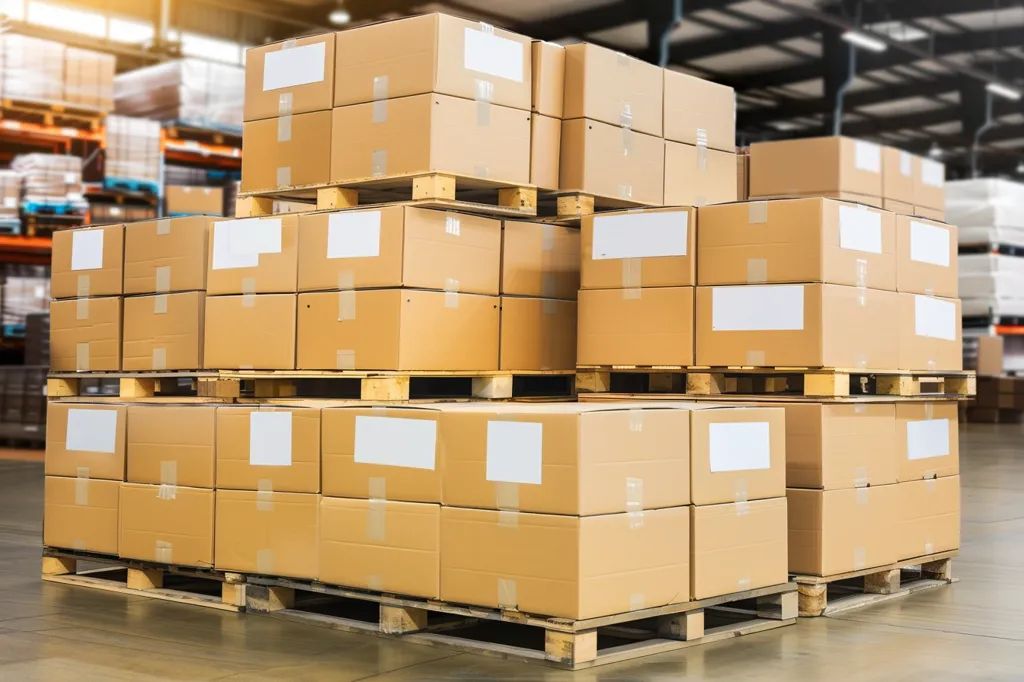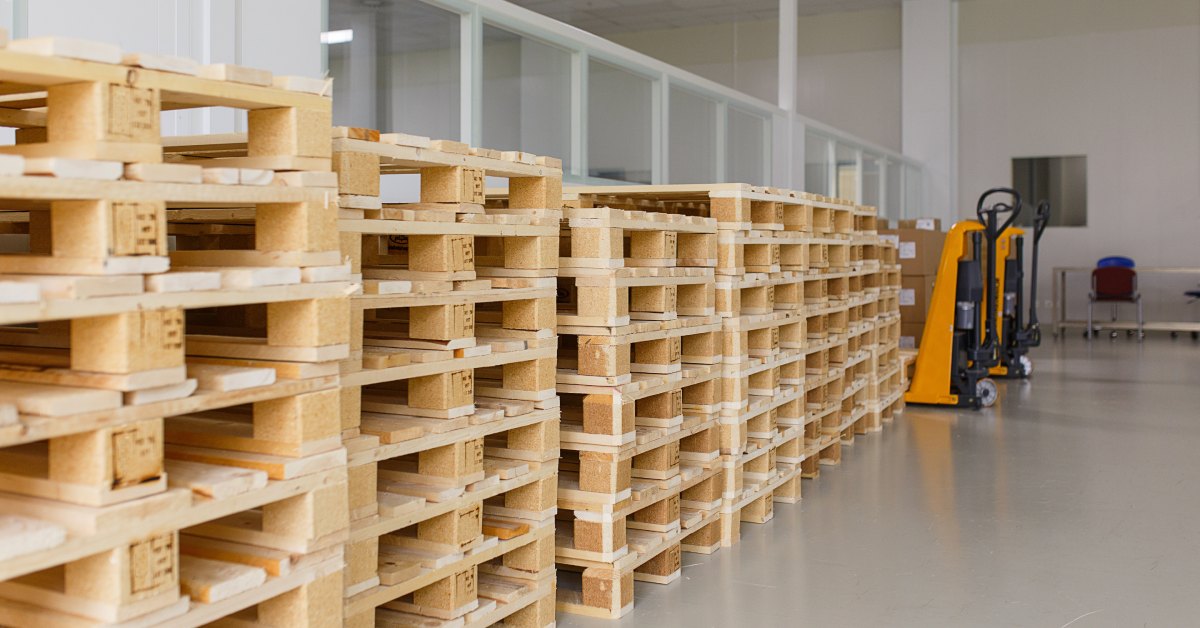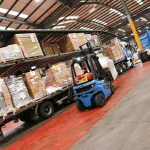
Stack Higher, Store Smarter: The Heavy-Duty Pallet Revolution in Kenyan Logistics.
Introduction – The Logistics Backbone of Kenya’s Economy
Kenya is widely recognized as one of East Africa’s most dynamic economies. From agriculture and manufacturing to retail and e-commerce, every sector relies on logistics to connect products with markets. Whether it’s avocados destined for Dubai, cut flowers headed to Amsterdam, or locally manufactured goods bound for Nairobi supermarkets, the success of these industries depends on efficient storage, handling, and transportation.
Behind the scenes, one element quietly but powerfully supports this logistics network: the pallet. Often overlooked, pallets are the foundation of modern storage and movement systems. They allow goods to be stacked, stored, and transported safely and efficiently, reducing labor time and minimizing product damage.
In Kenya, the demand for stronger, more reliable pallet systems has given rise to a heavy-duty pallet revolution. Unlike ordinary pallets, heavy-duty versions are designed to withstand heavier loads, higher stacking, and more rigorous handling conditions. This shift is transforming how warehouses operate, how supply chains function, and ultimately, how businesses grow.
As space becomes more expensive and customer expectations rise, companies in Kenya are realizing that “stacking higher and storing smarter” is not just a nice-to-have—it’s a necessity. Heavy-duty pallets are the unsung heroes making this possible, and they are fast becoming the backbone of Kenyan logistics.
Understanding Heavy-Duty Pallets
So, what exactly sets a heavy-duty pallet apart from a standard one? In simple terms, a heavy-duty pallet is built to carry more weight, endure harsher conditions, and maximize storage efficiency. While a standard pallet might hold 500–800 kilograms, heavy-duty pallets can often handle loads exceeding 1,500 kilograms, depending on material and design.
What Makes a Pallet “Heavy-Duty”?
The difference comes down to engineering. Heavy-duty pallets are constructed with reinforced frames, denser wood or plastic, and sometimes even metal reinforcements. They are designed not just to carry weight, but to do so safely while maintaining structural integrity during stacking, lifting, and transport.
Materials Used: Wood, Plastic, and Metal Comparisons
-
Wooden Heavy-Duty Pallets: These are the most common in Kenya due to affordability and availability. They are made from strong hardwoods and treated to resist pests and moisture. Wooden pallets are versatile, easy to repair, and widely accepted in international logistics.
-
Plastic Heavy-Duty Pallets: Durable and resistant to moisture, plastic pallets are gaining ground in industries like pharmaceuticals and food, where hygiene is paramount. However, they are significantly more expensive, limiting their adoption in Kenya’s price-sensitive market.
-
Metal Heavy-Duty Pallets: Rare in agriculture and retail, metal pallets are primarily used in specialized heavy industries. Their weight and cost make them impractical for mainstream Kenyan logistics.
Structural Design for Stacking and Weight Distribution
Heavy-duty pallets are engineered to handle vertical stacking without collapsing. They distribute weight evenly, reducing pressure points that could damage goods. In warehouses where vertical storage is essential, these pallets make it possible to maximize every cubic meter of space.
In short, heavy-duty pallets aren’t just stronger—they are smarter by design, tailored to the needs of industries that demand efficiency, safety, and reliability.
The Kenyan Logistics Landscape
To understand why heavy-duty pallets are gaining traction, we need to look at the bigger picture of Kenya’s logistics sector.
Growth of Warehousing and Storage Facilities
Over the past decade, Kenya has experienced a surge in demand for warehousing. Nairobi and Mombasa have become key logistics hubs, serving both domestic and regional trade. Modern warehouses are no longer simple storage units—they are advanced facilities equipped with racking systems, cold storage, and digital inventory management. In these environments, heavy-duty pallets are indispensable for maximizing space and ensuring smooth operations.
Urbanization and Industrial Zones Driving Pallet Demand
Kenya’s rapid urbanization and the rise of industrial zones like Athi River and Tatu City have created new demands for logistics solutions. Manufacturing plants, retail distribution centers, and export facilities all rely on palletized handling. Heavy-duty pallets, with their ability to handle bulk loads and reduce inefficiencies, are becoming the standard in these fast-growing sectors.
Role of Agriculture and Manufacturing in Logistics
Agriculture remains Kenya’s largest export earner, but manufacturing is also expanding, particularly in food processing, beverages, and consumer goods. Both sectors require reliable storage and transport systems. For exporters, pallets ensure compliance with international shipping standards. For manufacturers, they streamline operations and reduce costs.
Kenya’s logistics landscape is shifting toward modernization, and heavy-duty pallets are at the center of this transformation.
The Storage Challenge in Kenya
One of the biggest challenges facing Kenyan businesses is space. Warehouse space is expensive, and demand is rising rapidly due to growing exports, urbanization, and e-commerce. Companies are under pressure to store more goods in less space without compromising on safety or efficiency.
Limited Warehouse Space and Rising Costs
In Nairobi, warehouse rental prices have surged as demand outpaces supply. Many businesses, particularly SMEs, struggle to afford large storage facilities. This forces them to make the most of the space they have—often by stacking goods vertically. But without strong pallets, vertical stacking becomes risky, leading to product damage or workplace accidents.
The Importance of Vertical Stacking in Modern Logistics
Vertical storage is the key to optimizing warehouse efficiency. Instead of spreading goods across the floor, companies build upwards using pallet racking systems. This method can double or even triple storage capacity without expanding physical space. Heavy-duty pallets are crucial here, as they can handle the pressure of stacked loads without collapsing.
How Inefficient Storage Eats into Profits
Poor storage practices lead to product spoilage, damage, and lost revenue. For example, if cartons of delicate produce collapse under pressure, the exporter bears the cost of wastage. Similarly, disorganized warehouses increase handling time and reduce productivity. Heavy-duty pallets address these inefficiencies by providing a stable, reliable foundation for smarter storage.
In Kenya’s competitive business environment, inefficient storage isn’t just inconvenient—it’s costly. Heavy-duty pallets are helping businesses overcome this challenge and remain profitable.
Heavy-Duty Pallets as a Game Changer
Heavy-duty pallets are more than just platforms for stacking—they are transforming how businesses think about logistics.
Enabling Higher Stacking Without Risk
With stronger pallets, companies can safely stack goods higher, maximizing vertical space. For warehouses with limited capacity, this means storing more products without having to rent additional facilities. It’s a simple yet powerful way to cut costs while increasing efficiency.
Maximizing Warehouse Capacity Efficiently
By enabling higher stacking, heavy-duty pallets reduce the need for sprawling warehouses. A business can achieve a 20–30% increase in usable storage capacity simply by switching to stronger pallets and racking systems. This efficiency is especially valuable for exporters who need to store large quantities of goods before shipping.
Reducing Damage to Goods During Storage and Transport
Perhaps the biggest game-changer is in reducing losses. Heavy-duty pallets prevent goods from being crushed or damaged under weight, preserving product quality. For agriculture exporters, where freshness and presentation are everything, this can mean the difference between profit and loss.
In essence, heavy-duty pallets are enabling Kenyan businesses to “stack higher and store smarter,” revolutionizing how storage and logistics are managed.

Economic Benefits of Heavy-Duty Pallets
When businesses in Kenya first hear about heavy-duty pallets, many hesitate because of the higher upfront investment compared to standard pallets. However, the long-term economic benefits quickly outweigh the initial costs, making them a smart financial decision for logistics-heavy industries.
Lower Long-Term Costs Despite Higher Initial Investment
Think of heavy-duty pallets as the “SUVs” of the logistics world. They may cost more at the point of purchase, but they last longer, carry heavier loads, and reduce replacement frequency. A standard pallet might need replacement after a few months of intense use, while a heavy-duty version can last years if properly maintained. This reduces recurring expenses and saves money over time.
Savings from Reduced Spoilage and Breakages
Every damaged carton, broken box, or spoiled product represents a financial loss. For exporters of perishable goods like avocados, mangos, or flowers, even a small percentage of spoilage translates into thousands of shillings lost. Heavy-duty pallets prevent collapse, improve load stability, and protect goods during stacking and transportation. This directly reduces waste and boosts profit margins.
Enhanced Efficiency in Supply Chain Operations
Efficiency is money in logistics. Heavy-duty pallets allow forklifts to move heavier loads in fewer trips, reducing fuel and labor costs. They also streamline warehouse organization, making inventory easier to stack, locate, and dispatch. This improved flow means businesses can process more goods in less time, meeting tight export deadlines and increasing turnover.
For Kenyan businesses aiming to remain competitive in global trade, heavy-duty pallets are not just tools—they are cost-saving investments that strengthen the bottom line.
Safety and Compliance Factors
In logistics, safety is paramount. A collapsed stack in a warehouse doesn’t just damage goods—it can injure workers, stall operations, and invite costly lawsuits. Heavy-duty pallets play a major role in enhancing both safety and compliance across Kenya’s logistics sector.
Ensuring Workplace Safety with Reliable Pallets
Heavy-duty pallets provide a stable base for stacking, reducing the risk of tipping or collapsing under pressure. In warehouses where pallets are often stacked several meters high, this stability protects workers who handle goods daily. Stronger pallets also minimize accidents during forklift operations by ensuring balanced loads.
Meeting International Handling and Storage Standards
Kenya exports to markets with strict regulations, such as the European Union and Middle East. These regions demand high standards for packaging, hygiene, and handling. Heavy-duty pallets, especially when certified under ISPM-15, meet these requirements and reduce the risk of shipments being rejected at foreign ports. Compliance ensures smooth trade and safeguards Kenya’s reputation as a reliable exporter.
Pallet Certifications and Quality Assurance in Kenya
To maintain quality, Kenyan pallet manufacturers and suppliers are increasingly adopting certification programs. Exporters are encouraged to source pallets from trusted providers who adhere to international standards. This not only boosts safety but also builds confidence with international buyers.
In essence, heavy-duty pallets aren’t just about efficiency—they’re about building safer workplaces and meeting global compliance expectations.
Heavy-Duty Pallets in Agriculture Logistics
Agriculture is the lifeblood of Kenya’s economy, contributing nearly a third of GDP and employing millions of smallholder farmers. Exports like coffee, tea, flowers, fruits, and vegetables form the backbone of foreign exchange earnings. For these sectors, heavy-duty pallets are proving to be indispensable.
Handling Bulky Exports Like Avocados, Tea, and Coffee
Kenya’s avocado exports have grown exponentially, with Europe and Asia as top buyers. Avocados are heavy and sensitive to pressure, making strong pallets critical for preventing bruising during stacking. Similarly, coffee beans and tea require bulk transport in heavy sacks and boxes. Heavy-duty pallets make it easier to manage large quantities safely and efficiently.
Ensuring Freshness with Stable Stacking in Cold Storage
Cold-chain logistics is vital for perishable exports like flowers and French beans. However, cold storage facilities are costly, and space is limited. By enabling stable, vertical stacking, heavy-duty pallets allow exporters to maximize cooling space without risking product damage. This helps preserve freshness and ensures Kenyan produce arrives in top condition overseas.
Supporting Long-Haul Transport Efficiency
Kenya’s exports often travel thousands of kilometers by sea or air before reaching their destinations. Along this journey, goods are loaded, unloaded, and re-stacked multiple times. Heavy-duty pallets withstand these stresses, ensuring products remain intact from farm to foreign market.
In short, heavy-duty pallets are silent guardians of Kenya’s agricultural exports, protecting freshness and quality every step of the way.
Industrial and Retail Adoption
Beyond agriculture, Kenya’s industrial and retail sectors are also embracing heavy-duty pallets as they modernize operations.
Manufacturing and FMCG Industries Leading the Shift
Fast-moving consumer goods (FMCGs)—such as beverages, packaged foods, and household products—require high-volume storage and efficient distribution. Heavy-duty pallets are ideal for these industries, as they can handle bulk loads and withstand repeated handling. Manufacturing plants in Nairobi and Mombasa are increasingly adopting pallet systems to streamline supply chains.
Pallets in Supermarkets and Retail Chains
Modern retail chains like Carrefour, Quickmart, and Naivas rely on pallets to handle bulk deliveries. From bottled water to bulk flour, heavy-duty pallets ensure efficient stocking and safe transport. Retailers benefit from reduced breakages and faster inventory management, while customers enjoy consistent product availability.
Case Study: Warehousing Solutions in Nairobi
In Nairobi’s industrial areas, several logistics companies have shifted to heavy-duty pallet systems in their warehouses. By adopting vertical racking supported by strong pallets, they have increased storage capacity by up to 30%. This efficiency allows them to serve more clients while keeping costs competitive.
Clearly, the pallet revolution isn’t just an agricultural story—it’s reshaping how industries and retailers manage logistics across Kenya.
Sustainability of Heavy-Duty Pallets
As the world leans toward greener business practices, Kenya’s logistics sector is also under pressure to adopt sustainable solutions. Heavy-duty pallets are playing a surprising role in this sustainability journey.
Eco-Friendly Wood Sourcing and Recycling
Heavy-duty wooden pallets, when sourced from certified forests, support sustainable forestry practices. Many suppliers are now focusing on using timber from managed plantations rather than natural forests, reducing environmental impact. Once pallets reach the end of their life, they can be repurposed into furniture, mulch, or biofuel, minimizing waste.
The Role of Plastic Heavy-Duty Pallets in Sustainability
Although plastic pallets are not biodegradable, they offer sustainability in another form: longevity. A plastic heavy-duty pallet can last up to ten years, drastically reducing the frequency of replacements. This lowers demand for raw materials over time. When recycled properly, plastic pallets can be repurposed into new products, contributing to circular economies.
Striking a Balance Between Durability and Environment
The future of sustainable logistics in Kenya may lie in hybrid solutions—combining the eco-friendliness of wood with the durability of plastic. Already, some innovators are experimenting with pallets reinforced with recycled plastic edges, offering the best of both worlds.
For Kenya, sustainability isn’t just about compliance with international buyers—it’s about protecting natural resources while building resilient supply chains. Heavy-duty pallets, in both wood and plastic forms, are central to this balancing act.
Technology and Innovation in Pallet Systems
The logistics industry is rapidly evolving, and Kenya is not being left behind. Heavy-duty pallets are no longer just about strength—they are now part of a broader technological transformation that is reshaping warehousing, transportation, and supply chain management.
Smart Pallets with Tracking Sensors
Imagine a pallet that doesn’t just carry goods but also communicates in real time. Smart pallets embedded with RFID chips or IoT sensors are becoming a reality in global logistics. These pallets allow exporters to track shipments, monitor temperature conditions (crucial for perishables), and detect tampering. While adoption in Kenya is still in its early stages, forward-thinking exporters are beginning to explore these solutions to meet the demands of international buyers.
Automation and Pallet Compatibility with Forklifts & Robots
Automation is the future of warehousing. In advanced economies, robots already move pallets across warehouses without human intervention. For Kenya, the transition is gradual, but modern warehouses in Nairobi’s Tatu City and Athi River industrial zones are adopting automated racking systems compatible with heavy-duty pallets. These systems ensure faster movement, reduced labor costs, and fewer errors.
Digital Warehouse Management and Pallet Optimization
Warehouse Management Systems (WMS) are increasingly being adopted in Kenya. By integrating pallet data into digital platforms, businesses can optimize space, track stock levels, and manage inventory more efficiently. For example, a WMS can map out the warehouse layout and suggest optimal stacking configurations based on pallet load capacities. This reduces inefficiencies and maximizes productivity.
Heavy-duty pallets are no longer just storage tools—they’re evolving into data-driven assets that fit seamlessly into the digital supply chain revolution.
Challenges in Adopting Heavy-Duty Pallets in Kenya
Despite the clear advantages, the widespread adoption of heavy-duty pallets in Kenya faces several hurdles.
High Upfront Investment for SMEs
For small and medium enterprises (SMEs), the cost of switching from standard pallets to heavy-duty ones can feel overwhelming. With wooden heavy-duty pallets costing more than standard options, many small businesses delay adoption. However, this often results in higher losses due to breakages and inefficiencies in the long run.
Counterfeit Pallets Flooding the Market
Another challenge is the influx of low-quality or counterfeit pallets disguised as heavy-duty. These substandard pallets compromise safety and damage Kenya’s reputation in international trade. Businesses often fall into the trap of cheaper options, only to face higher costs due to frequent replacements or rejected shipments.
Knowledge Gaps and Lack of Training
Adopting heavy-duty pallets isn’t just about buying stronger products—it requires training staff on proper handling, stacking, and maintenance. Unfortunately, many warehouses in Kenya lack trained personnel, leading to misuse and shortened pallet lifespan. Bridging this knowledge gap is essential for maximizing benefits.
Overcoming these challenges requires coordinated efforts between businesses, suppliers, and regulators.
The Role of Government and Industry Associations
To build a strong logistics framework, government agencies and industry associations have a critical role to play in promoting heavy-duty pallet adoption.
Policies to Regulate Pallet Standards in Kenya
Standardization is key. Without clear guidelines, counterfeit or poor-quality pallets can enter the market, compromising safety and efficiency. By enforcing strict pallet standards, the Kenyan government can protect exporters, improve compliance with global requirements, and strengthen the country’s trade reputation.
Training Programs for Logistics Operators
Government agencies and industry bodies, such as the Kenya Association of Manufacturers (KAM), can develop training programs for warehouse workers, exporters, and transport operators. This ensures proper pallet handling, prolongs pallet lifespan, and reduces workplace accidents.
Public-Private Partnerships to Modernize Supply Chains
Collaboration between government and private players can help reduce costs and encourage wider adoption. For example, subsidies for certified pallet manufacturers or shared logistics hubs equipped with heavy-duty pallet systems could significantly benefit SMEs.
With supportive policies and strong partnerships, heavy-duty pallets could become standard practice across Kenya’s logistics network.
The Future of Heavy-Duty Pallets in Kenya
Kenya’s logistics industry is evolving rapidly, and heavy-duty pallets are set to play an even bigger role in the coming decade.
Increasing Demand with E-Commerce Growth
E-commerce in Kenya is booming, with platforms like Jumia, Copia, and Glovo reshaping retail. This growth means more warehouses, more storage needs, and faster movement of goods. Heavy-duty pallets will be essential in handling the surge in packaged products and bulk deliveries.
Hybrid Pallet Solutions for Sustainability and Strength
The future may lie in hybrid pallets that combine materials—such as wood reinforced with recycled plastic—to balance strength, cost, and environmental concerns. These solutions could become mainstream in Kenya as businesses push for both efficiency and sustainability.
Predictions for Kenya’s Logistics Sector by 2030
By 2030, Kenya is expected to be East Africa’s logistics hub, driven by infrastructure projects like the Standard Gauge Railway (SGR) and the expansion of port facilities in Mombasa and Lamu. Heavy-duty pallets will be central to this growth, supporting larger volumes, smarter warehouses, and more sophisticated supply chains.
In short, the future is about stacking higher, storing smarter, and moving faster—with heavy-duty pallets at the core of Kenya’s logistics revolution.
Conclusion
The heavy-duty pallet revolution in Kenya is more than a shift in packaging—it’s a transformation of the entire logistics ecosystem. From agriculture to manufacturing, retail to e-commerce, these strong, reliable platforms are enabling businesses to maximize warehouse space, reduce losses, improve safety, and meet international trade standards.
Yes, the initial cost is higher, and challenges remain. But as Kenya continues to modernize its supply chains, heavy-duty pallets are proving to be cost-effective, sustainable, and future-ready. They are the silent champions behind the country’s logistics boom, ensuring products move efficiently from farm, factory, or store to their final destination.
Kenya’s future in logistics is not just about building bigger warehouses—it’s about building smarter supply chains. And heavy-duty pallets are the foundation of that vision.
FAQs
1. What are heavy-duty pallets and how are they different?
Heavy-duty pallets are reinforced versions of standard pallets designed to carry heavier loads and withstand stacking pressure. Unlike standard pallets, they last longer, reduce damage to goods, and improve warehouse efficiency.
2. Why are heavy-duty pallets important for Kenyan logistics?
They maximize limited warehouse space, reduce spoilage, enhance safety, and meet international compliance standards, which are crucial for Kenya’s export-driven economy.
3. Are heavy-duty pallets cost-effective in the long run?
Yes. While they require a higher upfront investment, they last much longer and reduce losses from spoilage, damage, and inefficiencies, making them more economical over time.
4. How do they improve warehouse efficiency?
By enabling higher stacking, stabilizing loads, and supporting automation, heavy-duty pallets allow warehouses to store more goods in less space while improving handling speed.
5. What’s the future of pallet technology in Kenya?
The future includes smart pallets with tracking technology, hybrid eco-friendly designs, and increased adoption as Kenya’s logistics sector modernizes toward 2030.





Add a comment